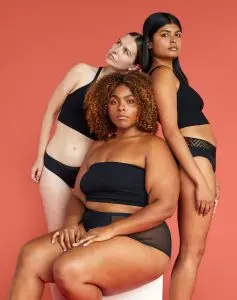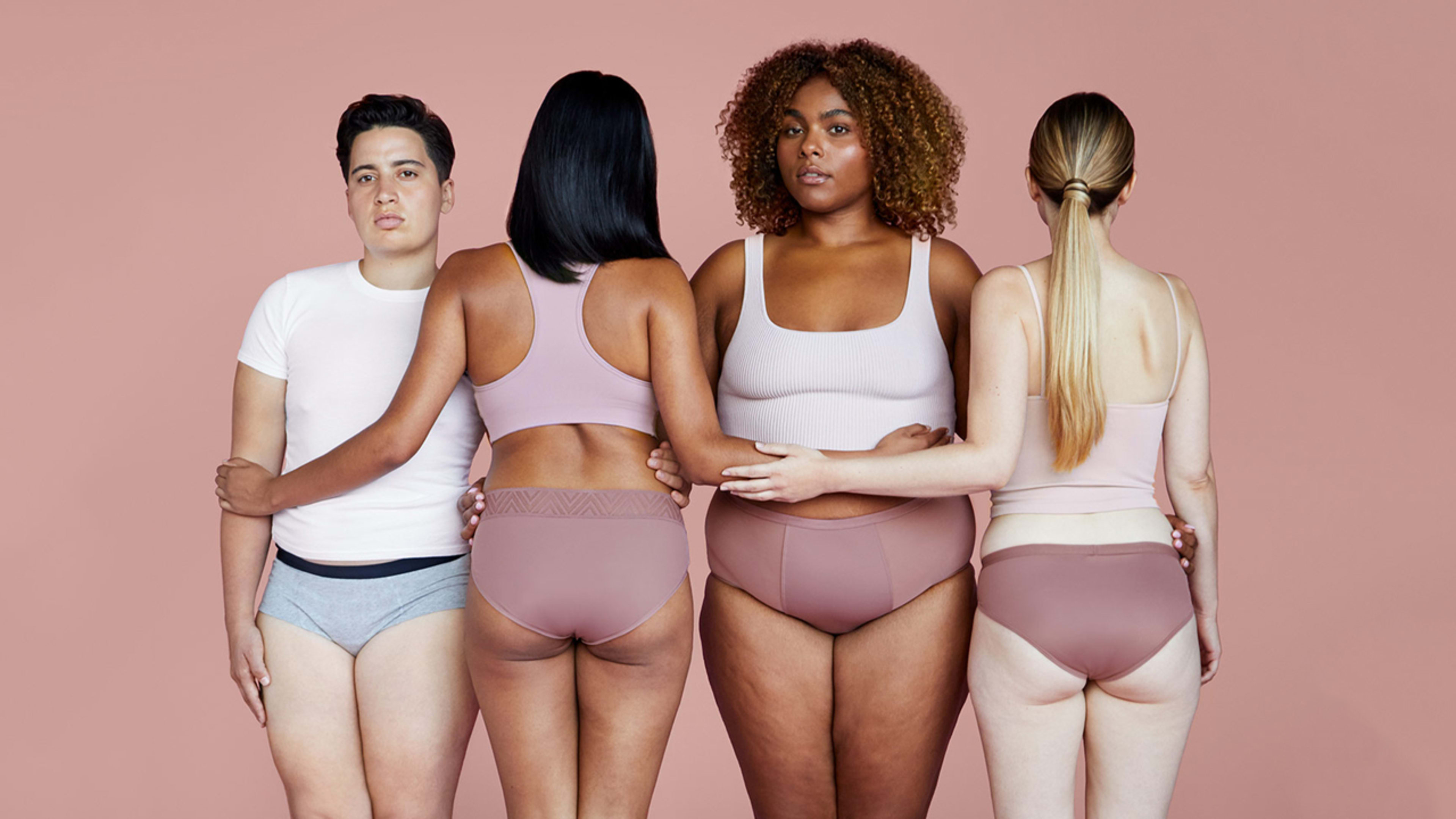“I think I got my period.”
That’s the opening line of Thinx’s new ad campaign, uttered by a young boy to his dad. In the next frame, a man rolls over in bed to reveal a blood stain on his sheets. Later, another man walks through a locker room with a tampon string peeking out from his briefs. These are, of course, everyday occurrences for people who get periods. Thinx’s ad reframes those experiences by asking: What if we all had periods?
The campaign—which bears the fitting tongue-in-cheek title “MENstruation”—is Thinx’s first ad on national TV and the first such campaign to be launched by a period underwear company. (This ad features cisgender men, but Thinx has previously run advertising with transgender men; the brand also carries more gender-neutral styles that are inclusive of all people with periods.) Thinx recruited advertising agency BBDO to create the campaign, which will run on 18 networks across the U.S., from NBC to Bravo, starting next week. Also in the mix are audio segments that will air on Spotify and podcast advertisements.
https://www.youtube.com/watch?v=-QEDZkj_Riw&feature=youtu.be
This ad certainly makes a statement on its own, but the intent is to introduce Thinx to people who don’t even know period underwear exists, let alone know the brand, and turn them into customers. (The company’s target is to reach 50% of women between the ages of 18 and 49 by the end of the year.) While Thinx has customers across the country, its base tends to be in urban areas. “A key piece of this is we need people to know that we exist,” says Maria Molland, who took over as CEO in 2017 and rehabilitated the startup after reports of poor benefits, pay, and work culture. “But our challenge is: There’s a lot of people who love the brand, but they don’t necessarily convert into customers because it’s such a behavior change.”

While the campaign feels like a stylistic departure from some of Thinx’s previous advertising, the brand is no stranger to pushing the envelope. In 2015, the New York subway ran a Thinx ad campaign—after nearly rejecting it—that featured suggestive images of a grapefruit cut in half and runny eggs. “We’ve always created very thought-provoking brand campaigns,” says chief brand officer Siobhan Lonergan. “So we wanted to take some of what makes Thinx really Thinx and embed that into the creative concept.”
The ad closes with the line “If we all had them, maybe we’d be more comfortable with them,” then cuts to an image of Thinx’s product. “We really fed into the duality of comfort—the idea of society being more comfortable, but also the fact that our product is a much more comfortable solution on your periods,” Lonergan says.
The ad won’t run in its entirety on every channel. The most daring scenes, which show a blood stain and tampon string, didn’t pass muster with certain channels due to advertising guidelines. Molland knows the ad might rub some people the wrong way. “I think it will upset quite a few people,” she says. “That’s okay because part of being a brand that stands for something is: Sometimes you irritate people. Even if we’re irritating them, our objective is to get them to think.”
Last month, Thinx secured a $25 million investment—its biggest funding round to date—from personal care company Kimberly Clark. About 75% of that investment is going toward the campaign and other marketing initiatives, but the tie-up will also help get Thinx products in front of more consumers, through mainstream retailers like Walmart and Target. In early 2021, Thinx will launch a more affordable underwear line—meant to be sold in mass retailers—that will bring costs to under $20 per pair.
The brand clocked $50 million in sales last year, and Thinx is already selling its wares globally across 60 retailers; about 30% of the company’s business is outside the U.S. at the moment. But Molland believes they’re just getting started. “We have pretty big ambitions and want to be a $500 million company in the next eight years,” she says. “And in order to do that, you have to be a global brand.”
Recognize your brand’s excellence by applying to this year’s Brands That Matter Awards before the early-rate deadline, May 3.
